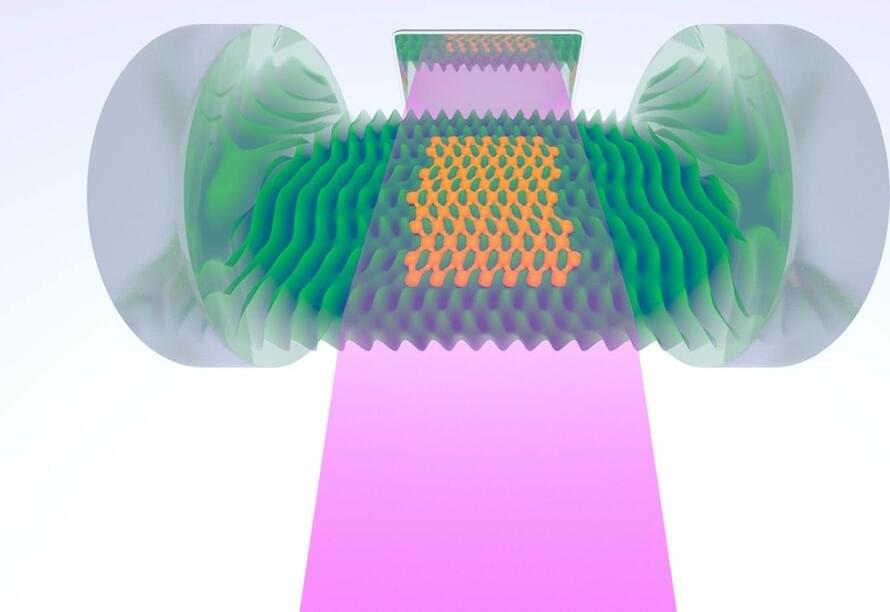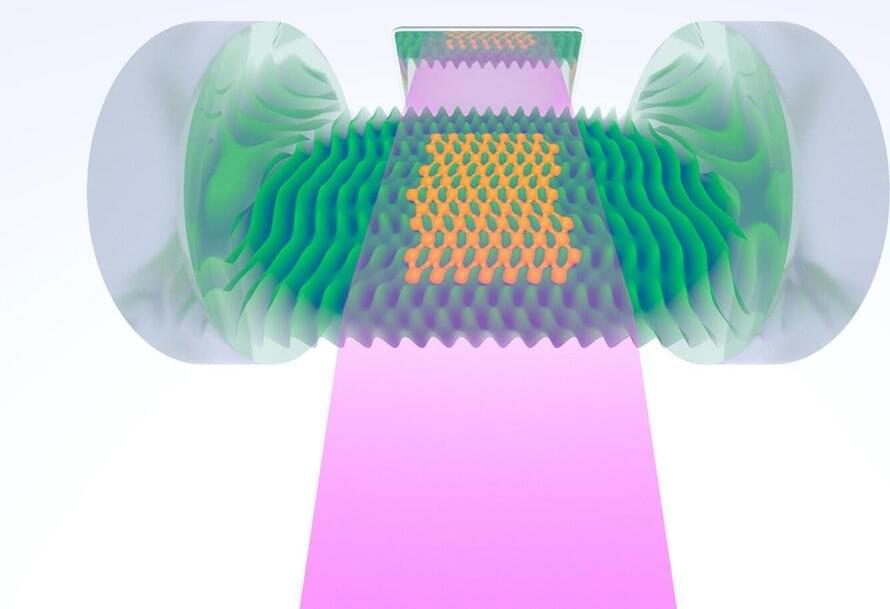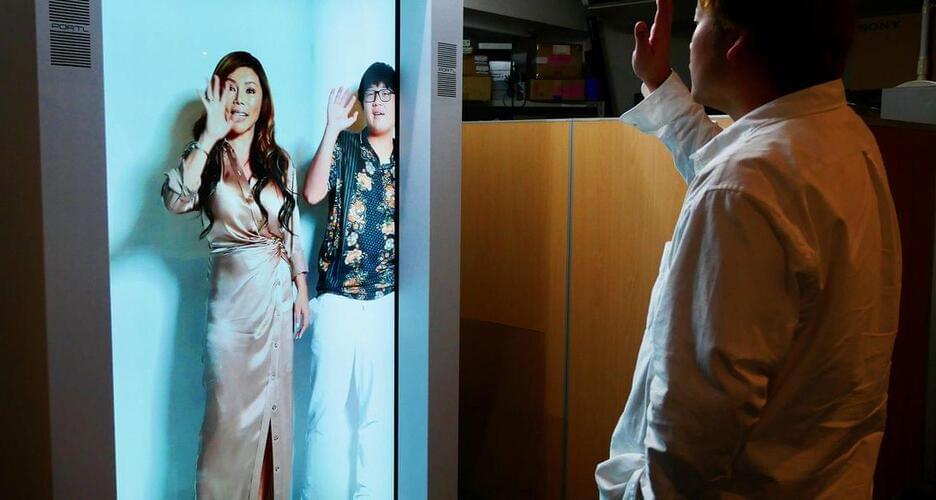Name: Travis Chen and Brian Femminella
Age: 22 and 21
Location: Seattle, Washington; Los Angeles, California.
Business: SoundMind, a music therapy app designed for those experiencing trauma, depression 0, and anxiety.

Name: Travis Chen and Brian Femminella
Age: 22 and 21
Location: Seattle, Washington; Los Angeles, California.
Business: SoundMind, a music therapy app designed for those experiencing trauma, depression 0, and anxiety.

Aiming to emulate the quantum characteristics of materials more realistically, researchers have figured out a way to create a lattice of light and atoms that can vibrate – bringing sound to an otherwise silent experiment.
When sound was first incorporated into movies in the 1920s, it opened up new possibilities for filmmakers such as music and spoken dialogue. Physicists may be on the verge of a similar revolution, thanks to a new device developed at Stanford University that promises to bring an audio dimension to previously silent quantum science experiments.
In particular, it could bring sound to a common quantum science setup known as an optical lattice, which uses a crisscrossing mesh of laser beams to arrange atoms in an orderly manner resembling a crystal. This tool is commonly used to study the fundamental characteristics of solids and other phases of matter that have repeating geometries. A shortcoming of these lattices, however, is that they are silent.
Ad Astra School is the experimental school that Elon Musk started in one of SpaceX’s factories to give an education to his own children and selected children of SpaceX employees. The future of work will require a set of skills that are not taught in schools today. The future of work will involve robots and Artificial Intelligence collaborating with humans. The Astra Nova School’s pillars include caring about community, focusing on student experiences, and sharing the work they do with the world.
Here students learn about simulations, case studies, fabrication and design projects, labs, and corporate collaboration. In general, school systems are rigid. They are more system-centric than student-centric. Astra Nova is changing that by creating a philosophy of student centricity, a value for individual abilities, praising curiosity, and encouraging problem-solving and critical thinking.
💰 Get Free Bitcoin on CoinBase: https://rb.gy/dhms0s.
💰 Earn Free Crypto: https://rb.gy/jf0q9n.
💰Get Free Stocks: https://rb.gy/2fy0a3My Favorite Editing Software:
▶ Adobe Premier Pro: https://rb.gy/qzfnsgMy Favorite Royalty Free Music Site:
▶ Epidemic Sounds: https://rb.gy/wssm4kFor more by Smart Sense subscribe now: https://bit.ly/36lGHuU
For the best videos be sure to subscribe and turn on the post notifications so you don’t miss any videos and once you’ve subscribed comment something nice for a shoutout.

When sound was first incorporated into movies in the 1920s, it opened up new possibilities for filmmakers such as music and spoken dialogue. Physicists may be on the verge of a similar revolution, thanks to a new device developed at Stanford University that promises to bring an audio dimension to previously silent quantum science experiments.
In particular, it could bring sound to a common quantum science setup known as an optical lattice, which uses a crisscrossing mesh of laser beams to arrange atoms in an orderly manner resembling a crystal. This tool is commonly used to study the fundamental characteristics of solids and other phases of matter that have repeating geometries. A shortcoming of these lattices, however, is that they are silent.
“Without sound or vibration, we miss a crucial degree of freedom that exists in real materials,” said Benjamin Lev, associate professor of applied physics and of physics, who set his sights on this issue when he first came to Stanford in 2011. “It’s like making soup and forgetting the salt; it really takes the flavor out of the quantum ‘soup.’”.
We all love seeing data represented in pretty ways — whether it’s necessary or not. Take VU meters for example. They’re a super useful tool for audio editors to balance signals, but they also look really cool, even if you’re only listening to music. Who didn’t use a Winamp skin with a built-in VU meter back in the day? Even after the demise of everyone’s favorite media player, we still see these great graphs popping up all over the place.
Most recently, we’ve seen VU meters circle back around to have a bit of a retro vibe in this awesome Arduino-controlled LCD VU meter built by [mircemk]. Based on the KTAudio VU Meter project, it features an ultra-wide LCD, audio input, and volume knob, all tidily wrapped up in a case whose color scheme that can only conjure images of the famed Altair 8800, or an old Tektronix oscilloscope. The LCD itself is fairly responsive — but you can judge for yourself in the video below. The signature fading that so commonly accompanies screen refreshes on LCDs such as this one really adds to the retro effect.
You may just need one of these displays on your desk — after all, while you may not need to know how loud each audio channel is, don’t you at least want the information available? Just in case. Bar graph display a bit too modern-looking for you? Well then you should check out [mircemk]’s OLED version that displays dual analog meters.
CRISPR Gene editing therapy is used for the first time in living humans with amazing results.
— About ColdFusion –
ColdFusion is an Australian based online media company independently run by Dagogo Altraide since 2009. Topics cover anything in science, technology, history and business in a calm and relaxed environment.
ColdFusion Discord: https://discord.gg/coldfusion.
Podcast: https://open.spotify.com/show/3dj6YGjgK3eA4Ti6G2Il8H
ColdFusion Music Channel: https://www.youtube.com/channel/UCGkpFfEMF0eMJlh9xXj2lMw.
ColdFusion Merch:
A grandma becomes an e-gamer. And she seems to be very good.
I like the way technology is giving the elderly the chance to do more exciting types of sports and recreation.
You are never too old to start a passion!
The word “gamer” can mean a lot of different things to a lot of different people.
You’ve got your bloodthirsty but efficient killing machines. There’s your out of control, rage-filled tryhards. The soft-spoken, mechanically gifted psychopaths. And, of course, the clueless noobs who always seem to end up in the wrong place at the wrong time.

The iconic Princess Leia hologram scene in the original Star Wars movie in 1978 did much to whet our technology appetite for this futuristic form of communication. In 2012 in the real world, the ground-breaking telepresence resurrection of Tupac Shakur at the Coachella music festival wowed the audie.
Will drone deliveries be a practical part of our future? We visit the test facilities of Wing to check out how their engineers and aircraft designers have developed a drone and drone fleet control system that is actually in operation today in parts of the world. Here’s how their VTOL drone works and what it’s like to both load and receive a package carried by an autonomous aircraft!
Shot by Joey Fameli and edited by Norman Chan.
Additional footage courtesy of Wing.
Music by Jinglepunks.
Join this channel to support Tested and get access to perks:
https://www.youtube.com/channel/UCiDJtJKMICpb9B1qf7qjEOA/join.
Tested Ts, stickers, mugs and more: https://tested-store.com.
Subscribe for more videos (and click the bell for notifications): https://www.youtube.com/subscription_center?add_user=testedcom.
Twitter: http://www.twitter.com/testedcom.
Facebook: http://www.facebook.com/testedcom.
Instagram: https://www.instagram.com/testedcom/
Discord: https://www.discord.gg/tested.
Amazon Storefront: http://www.amazon.com/shop/adamsavagestested?tag=lifeboatfound-20.
Savage Industries T-shirts: https://cottonbureau.com/stores/savage-merchandising#/shop.
Tested is:

Taking psilocybin can affect one’s emotional state when listening to music, according to new research presented earlier this month at the 34th ECNP Congress in Lisbon.
Psilocybin, the active psychedelic component of magic mushrooms, has previously shown great promise when used in therapy settings for the treatment of depression. Many of these clinical trials often make use of selected music playlists to support the subjective psychedelic experience felt by the trial participant.
Now, scientists believe that this action of combining psilocybin with music may result in enhanced emotional processing on behalf of the participant, implying that music should be treated as a more active component of psilocybin therapy.